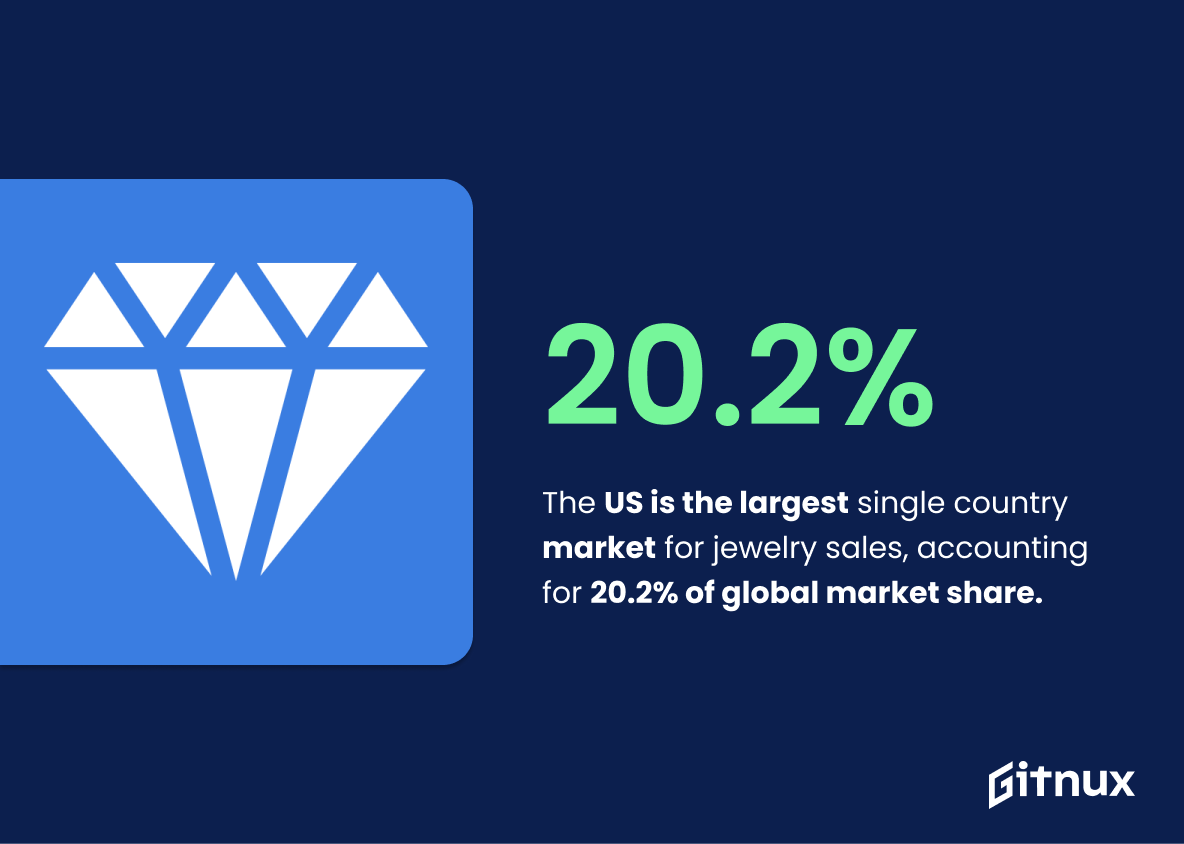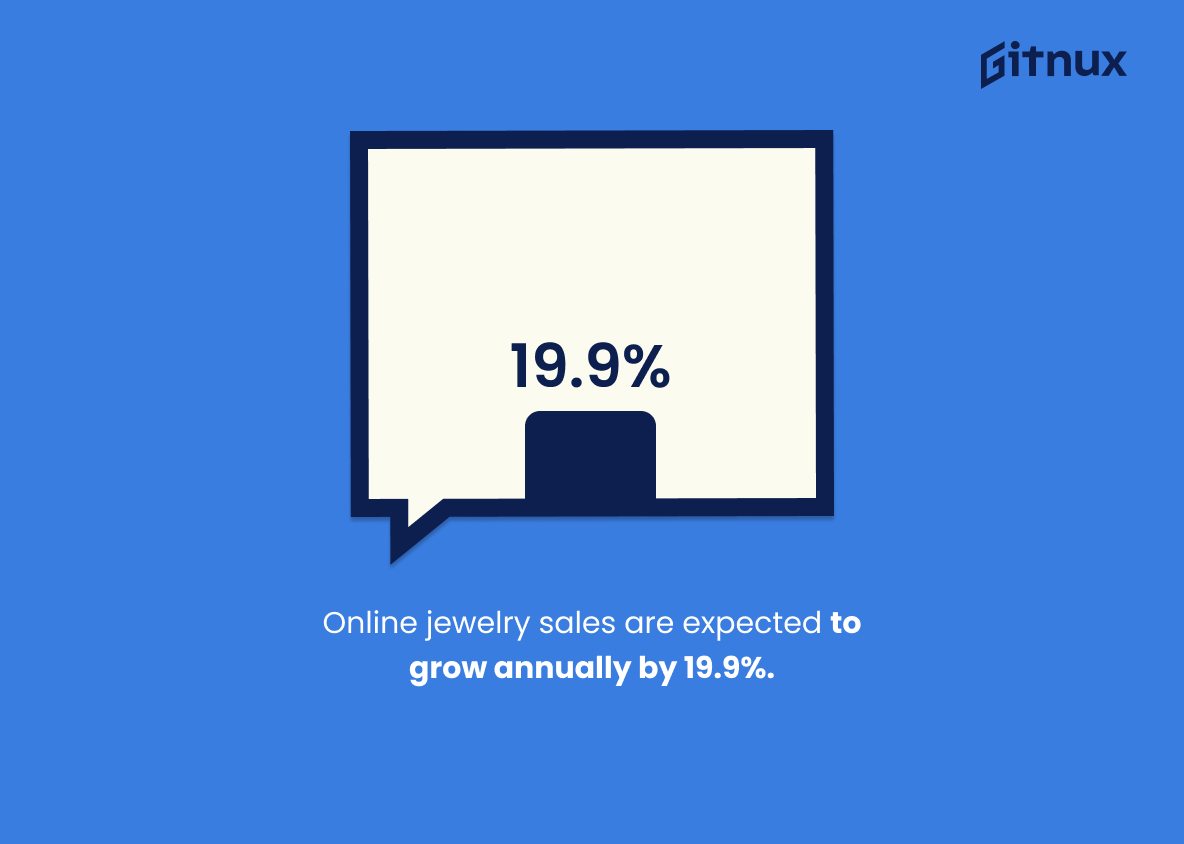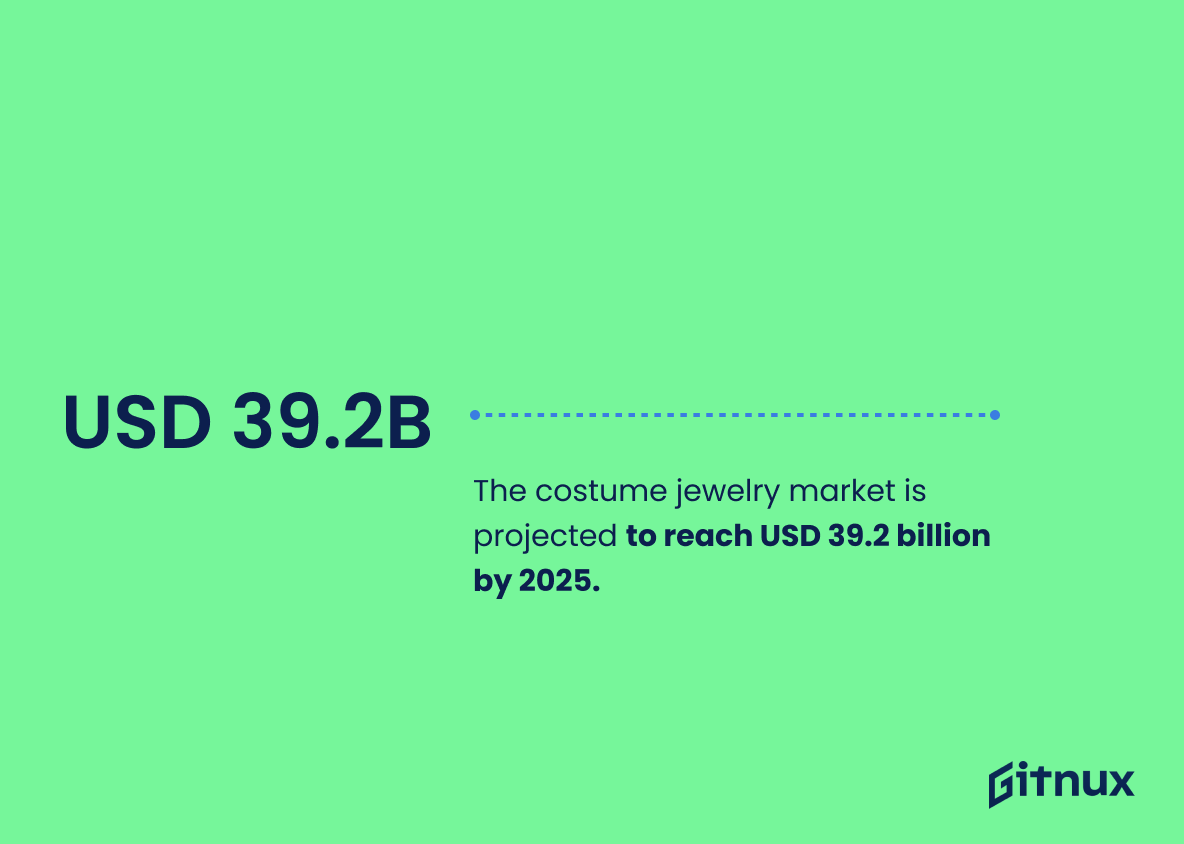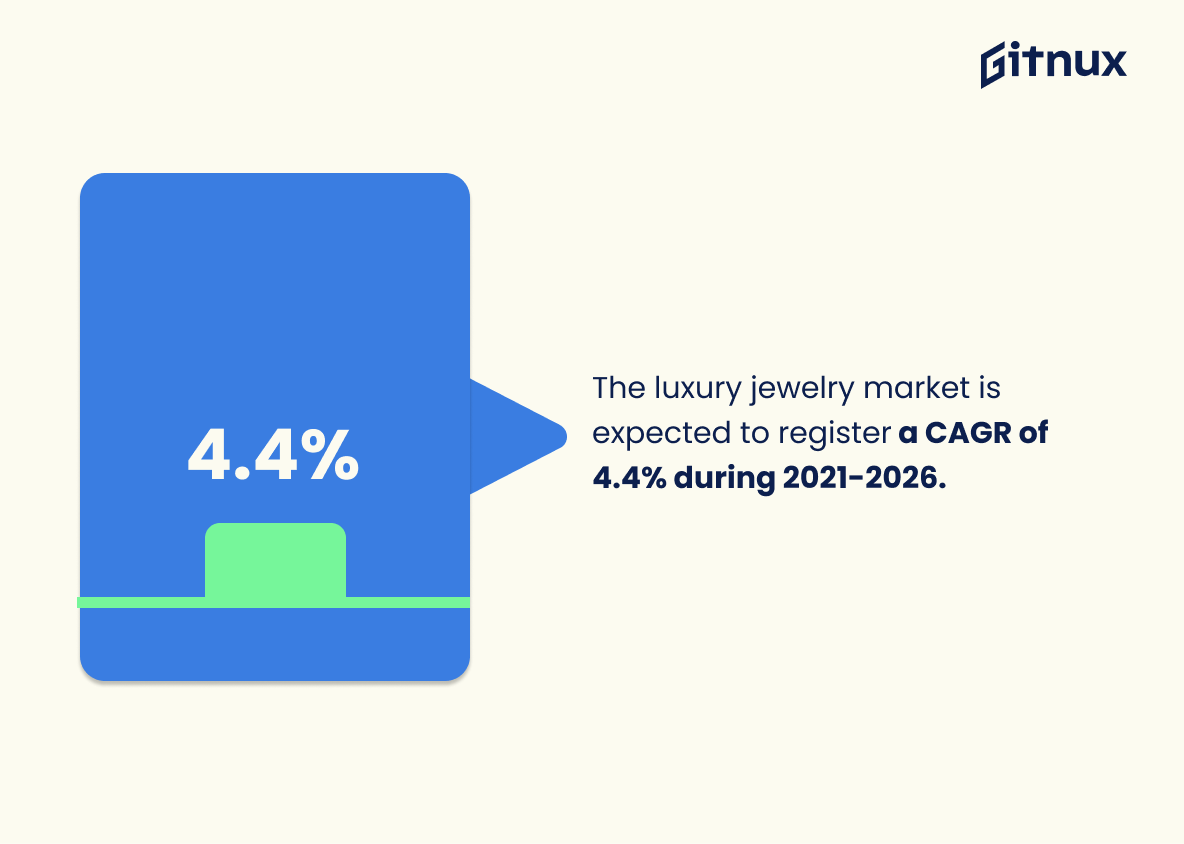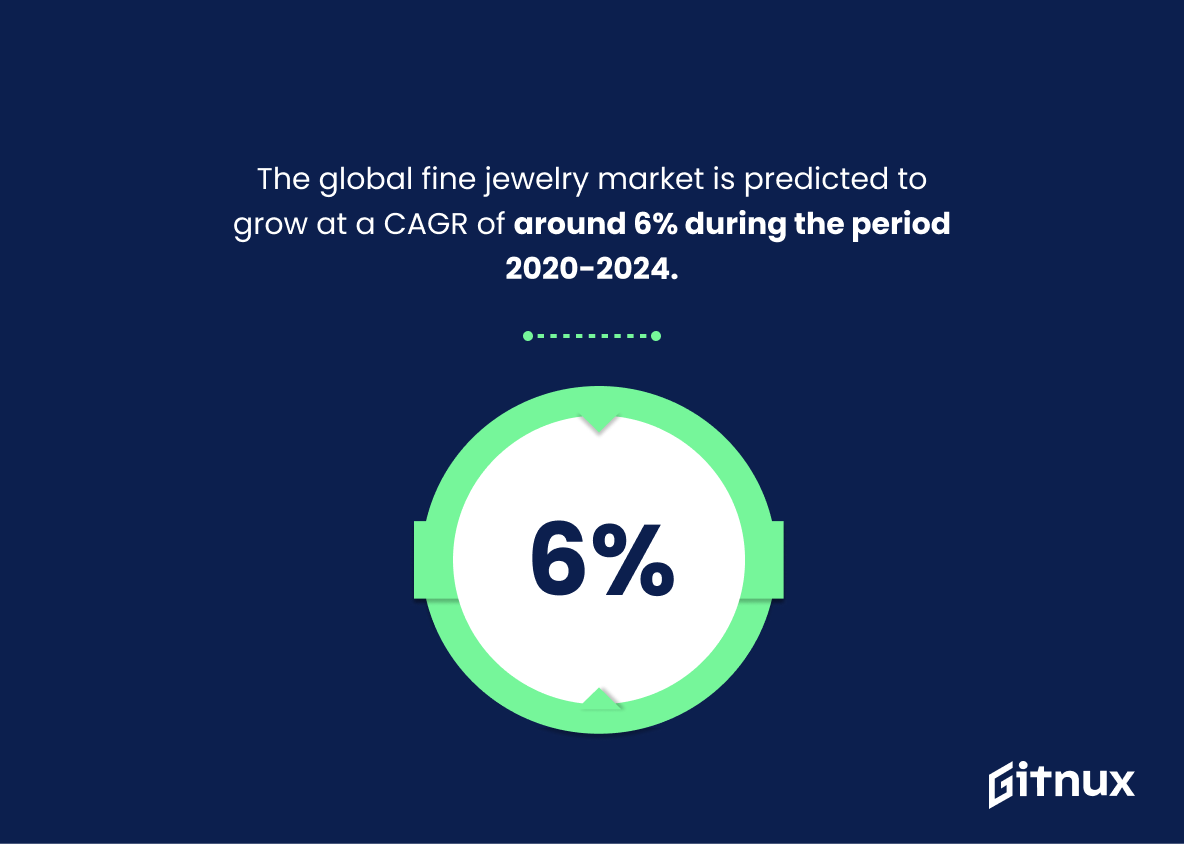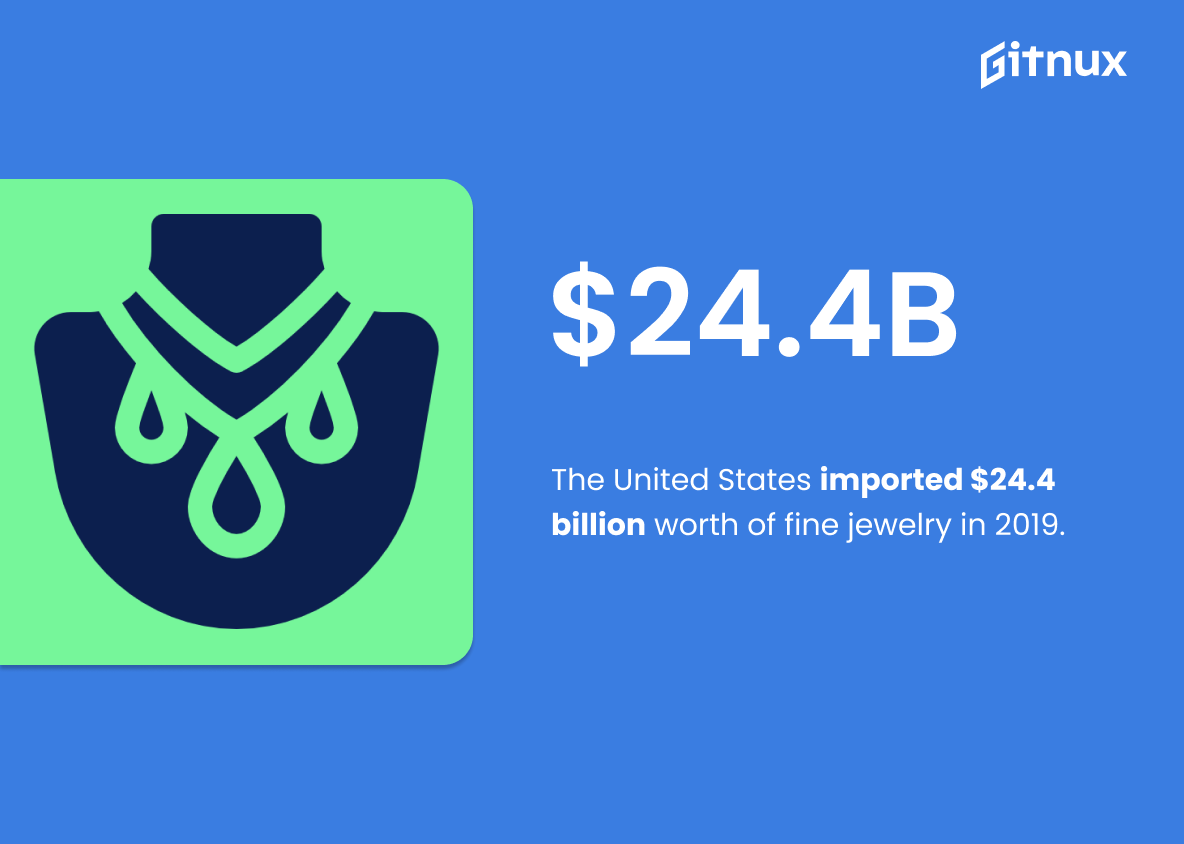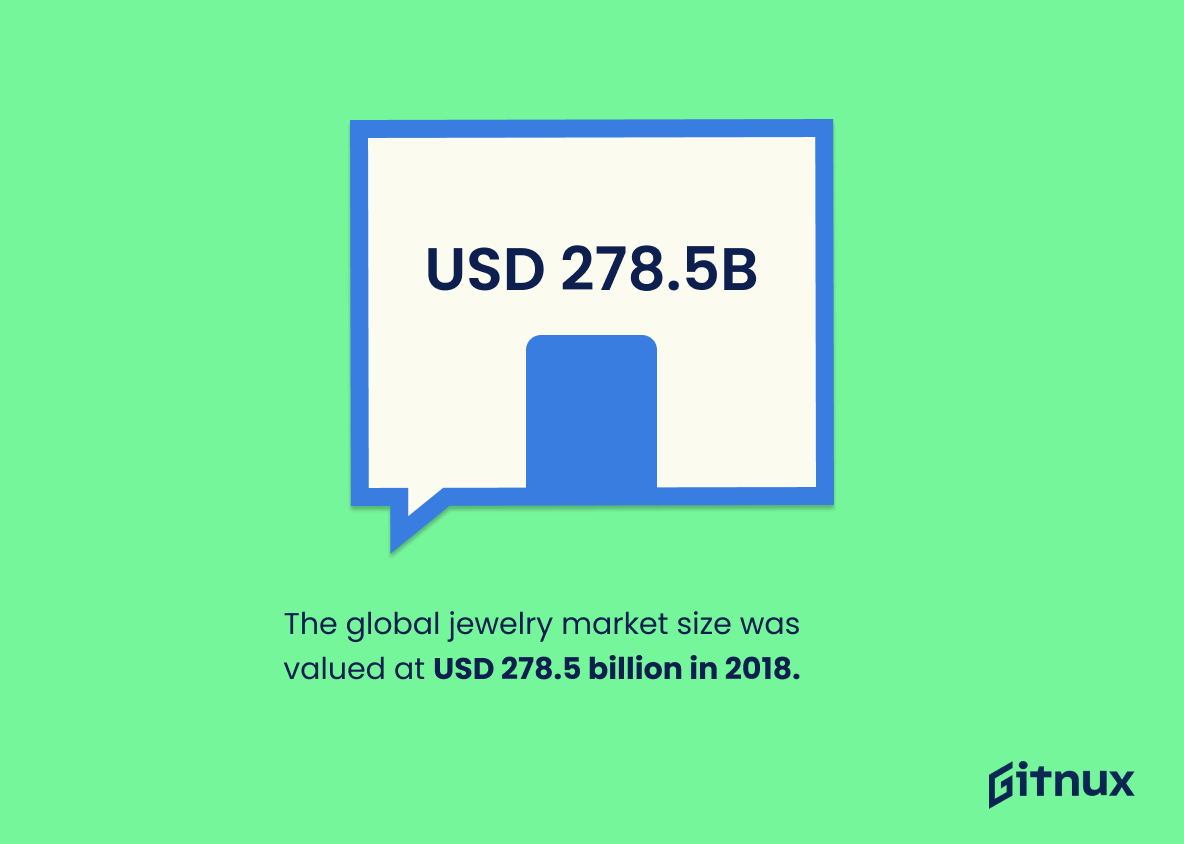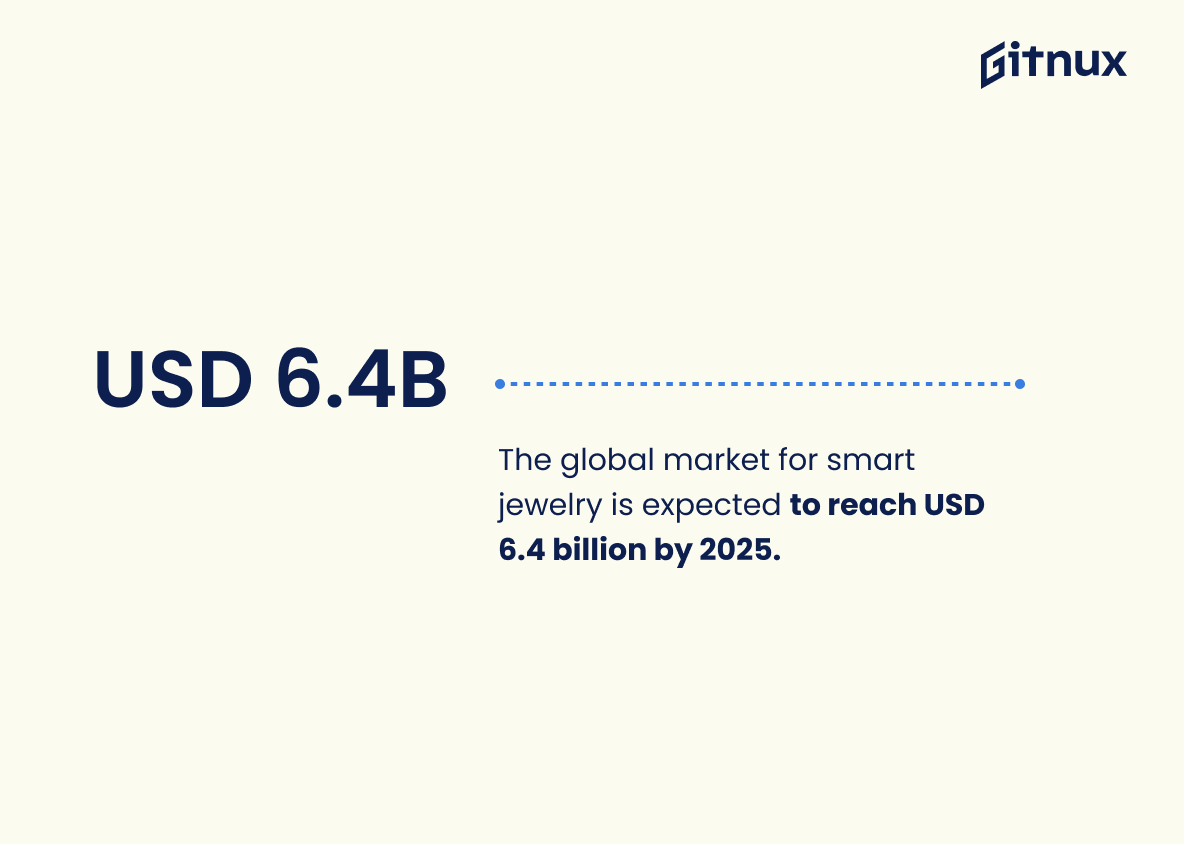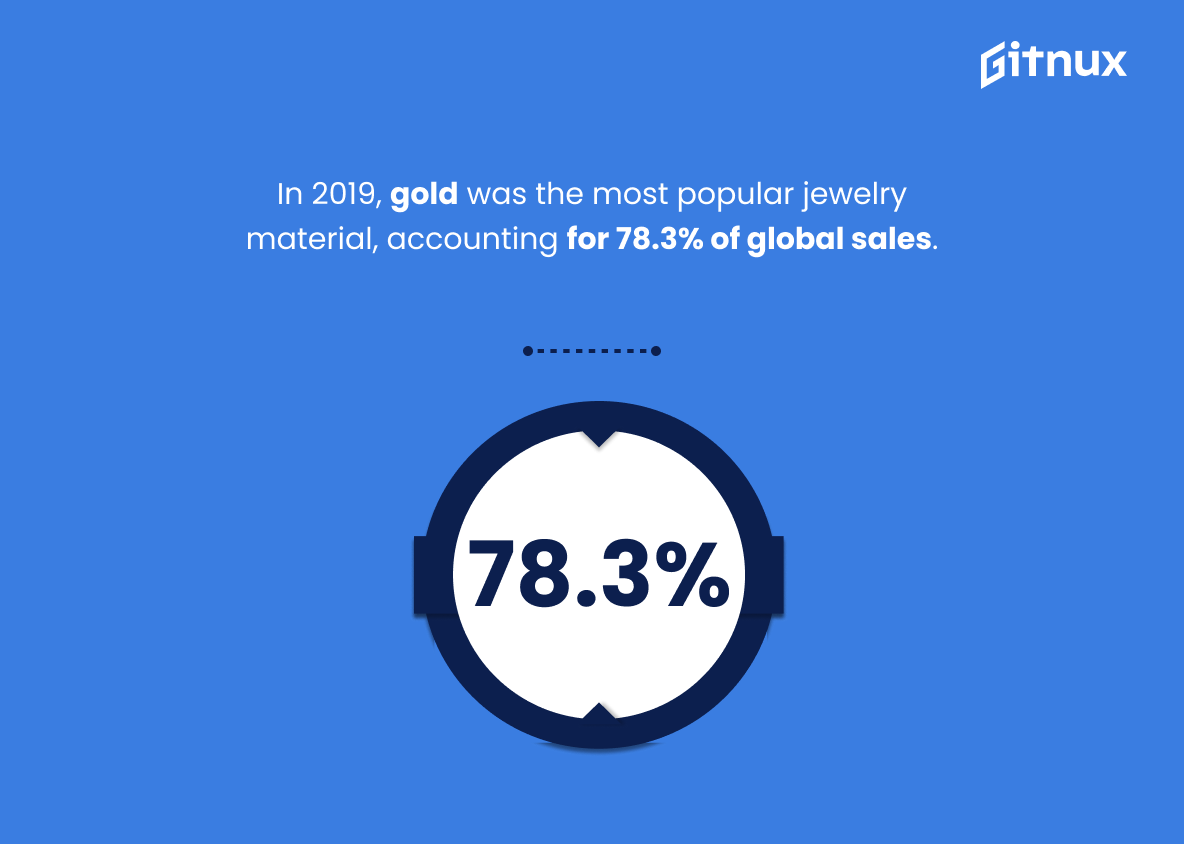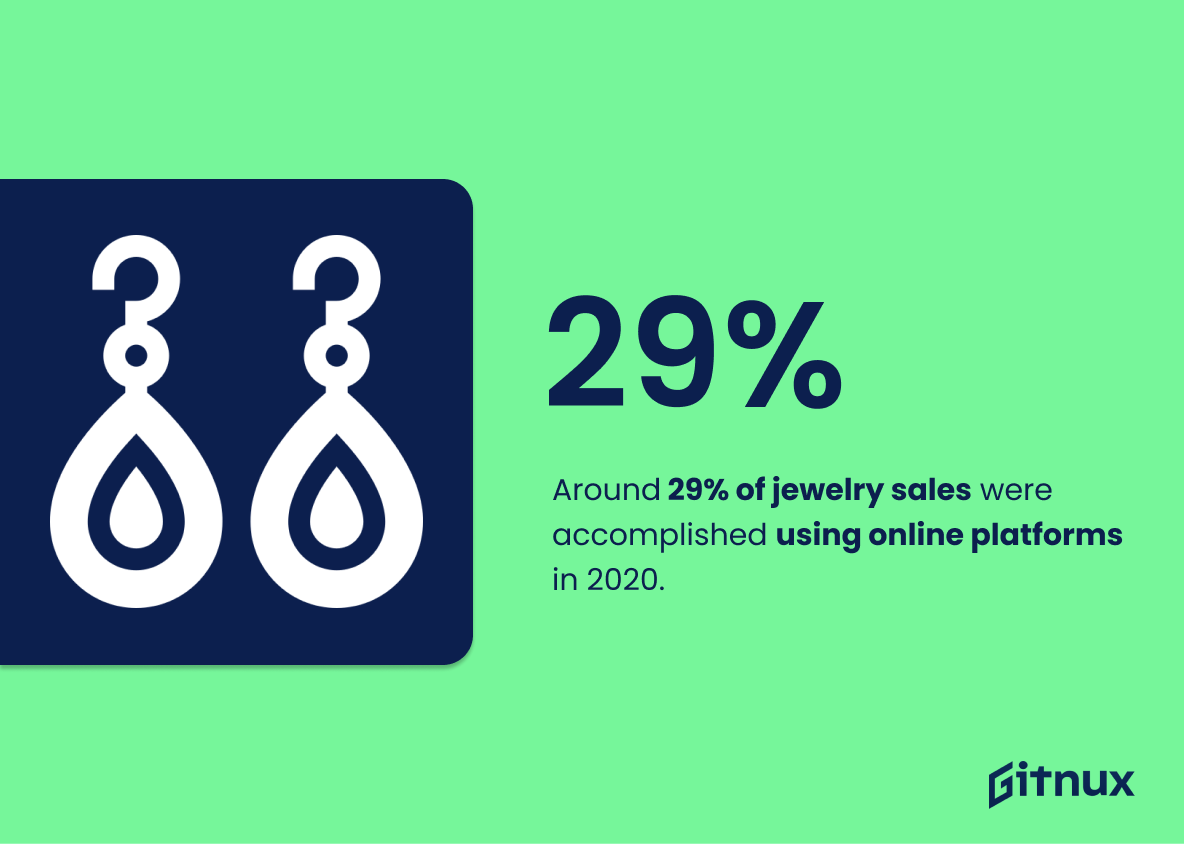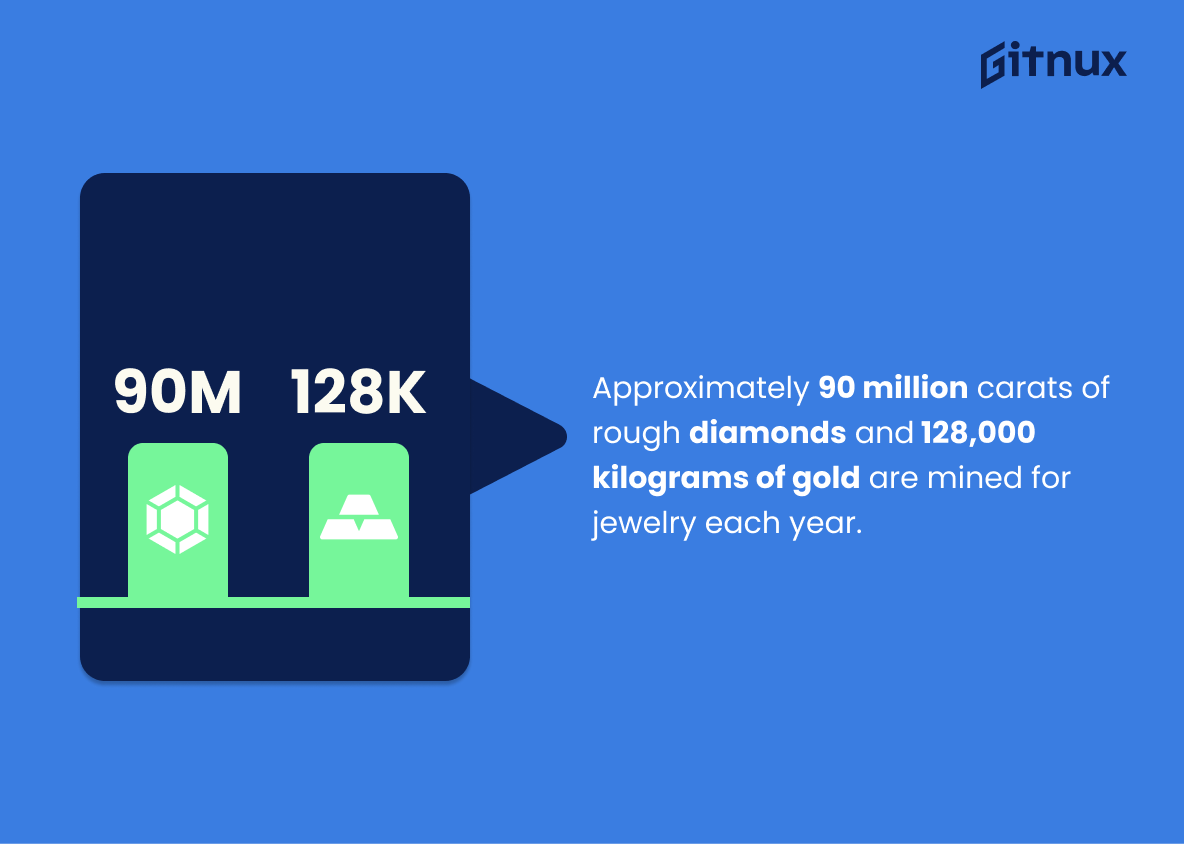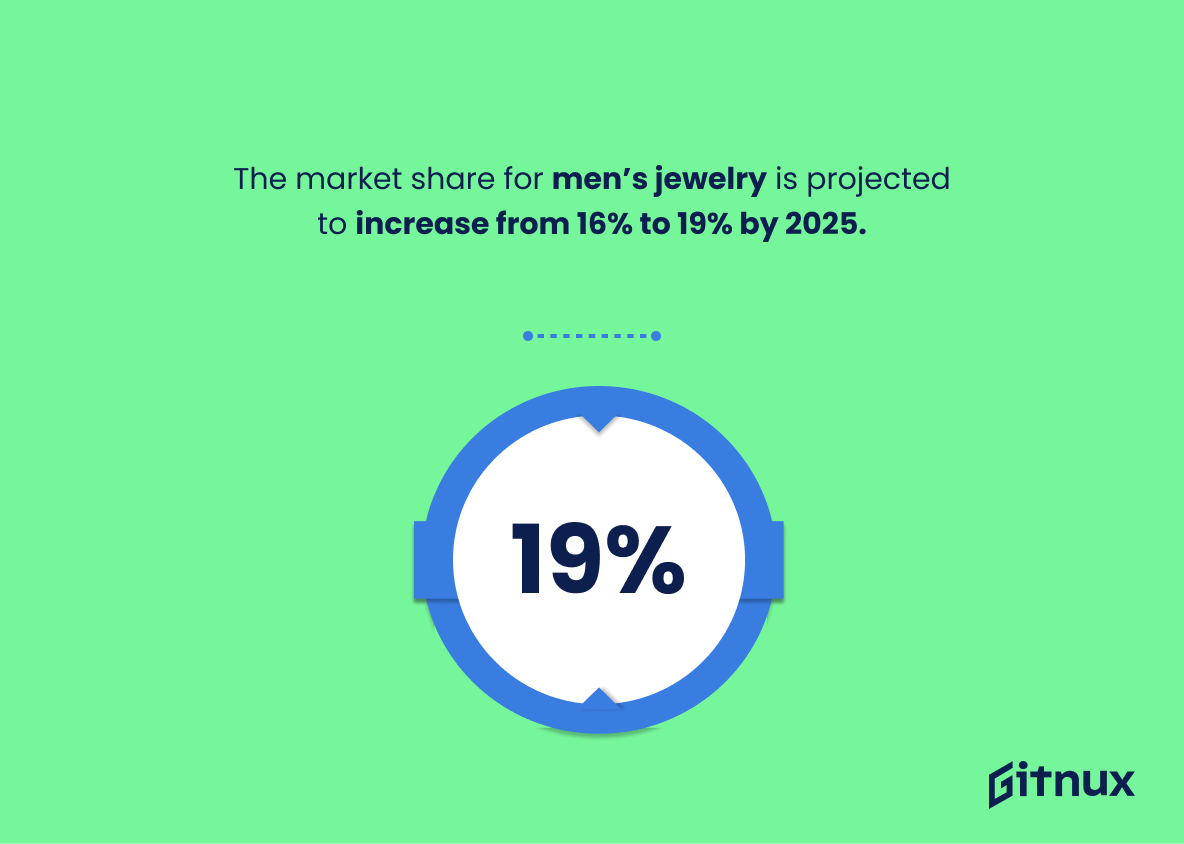Jewellery is a timeless and classic accessory that has been around for centuries. From the ancient Egyptians to modern day fashionistas, jewellery has always had an important place in our lives. As technology advances, so does the industry of jewellery – with new materials being used and innovative designs created every year. In this blog post we will be exploring some interesting statistics about the global jewelry market, including its size, regional marketshare breakdowns and growth projections over time. We’ll also look at specific segments such as costume jewelry, luxury jewelry and smart jewelry to get a better understanding of how these sub-markets are performing globally. Finally we’ll take a closer look at key countries like India and USA which have significant influence on the overall market dynamics due to their large consumer base for fine jewelery products
This statistic is a testament to the immense potential of the jewellery industry, indicating that it is a lucrative and growing market. It is a valuable insight for anyone interested in the jewellery industry, as it provides a glimpse into the future of the industry and the opportunities it presents. This statistic is a powerful reminder of the immense potential of the jewellery industry and the potential it holds for those looking to invest in it.
Asia Pacific is the largest regional jewelry market, accounting for around 60% of the global market share.
This statistic is a testament to the immense potential of the Asia Pacific region in the jewellery industry. It highlights the fact that the region is a major player in the global market, and that businesses should consider investing in the area to capitalize on its growth. Furthermore, it serves as a reminder that the jewellery industry is a lucrative one, and that there are plenty of opportunities for businesses to make a profit.
Jewellery Industry Statistics Overview
The US is the largest single country market for jewelry sales, accounting for 20.2% of global market share.
This statistic is a testament to the immense influence the US has on the jewellery industry. It highlights the fact that the US is a major player in the global market, and that its share of the market is significant. This is important information for anyone interested in the jewellery industry, as it provides insight into the size and scope of the industry, and the potential for growth.
Online jewelry sales are expected to grow annually by 19.9%.
This statistic is a clear indication that the jewellery industry is on the rise, with online sales expected to increase year on year. It is a sign that the industry is thriving and that customers are increasingly turning to online stores to purchase jewellery. This is an important statistic to consider when discussing the jewellery industry, as it shows that the industry is growing and that customers are increasingly turning to online stores to purchase jewellery.
The costume jewelry market is projected to reach USD 39.2 billion by 2025.
This statistic is a testament to the immense potential of the costume jewelry market, indicating that it is a lucrative industry with a bright future. It is a valuable insight for anyone interested in the jewellery industry, as it provides a glimpse into the growth and development of the sector. Furthermore, it serves as a reminder of the importance of staying up-to-date with the latest industry trends and developments.
The luxury jewelry market is expected to register a CAGR of 4.4% during 2021-2026.
This statistic is a valuable insight into the future of the luxury jewelry market, indicating that it is likely to experience steady growth over the next five years. This is an important piece of information for anyone interested in the jewellery industry, as it provides an indication of the potential for success in the sector. Furthermore, it can be used to inform decisions about investments, marketing strategies, and other business decisions.
The global fine jewelry market is predicted to grow at a CAGR of around 6% during the period 2020-2024.
This statistic is a valuable insight into the future of the jewelry industry, as it indicates that the market is expected to experience steady growth over the next four years. This is great news for those in the jewelry industry, as it suggests that there is potential for increased profits and opportunities for expansion. Furthermore, this statistic can be used to inform decisions about investments, marketing strategies, and product development, as it provides a glimpse into the potential of the industry.
The United States imported $24.4 billion worth of fine jewelry in 2019.
This statistic is a testament to the immense popularity of fine jewelry in the United States. It speaks to the fact that Americans are willing to invest in quality pieces, and that the jewelry industry is thriving. It also indicates that the industry is a major contributor to the US economy, and that it is an important part of the country’s overall financial health.
The global jewelry market size was valued at USD 278.5 billion in 2018.
This statistic is a testament to the immense size of the jewelry market, highlighting the immense potential for growth and success within the industry. It serves as a reminder of the sheer scale of the jewelry industry, and the potential for businesses to capitalize on the lucrative opportunities it presents.
The global market for smart jewelry is expected to reach USD 6.4 billion by 2025.
This statistic is a testament to the potential of the jewellery industry, indicating that the global market for smart jewellery is projected to experience significant growth in the coming years. It is a sign that the industry is on the rise, and that there is a great opportunity for businesses to capitalize on this trend. This statistic is a valuable insight for anyone interested in the jewellery industry, and should be taken into consideration when making decisions about investments and strategies.
The Indian jewelry market is expected to reach a value of INR 10,042 billion by 2025.
This statistic is a testament to the immense potential of the Indian jewelry market, indicating that it is set to become a major player in the global jewelry industry. With a projected value of INR 10,042 billion by 2025, the Indian jewelry market is poised to become a major source of revenue for the country and a major contributor to the global jewelry industry. This statistic is a valuable insight into the future of the jewelry industry and provides a glimpse into the potential of the Indian jewelry market.
In 2019, gold was the most popular jewelry material, accounting for 78.3% of global sales.
This statistic is a telling indication of the current state of the jewellery industry. It shows that gold is the most sought-after material for jewellery, accounting for the majority of global sales. This highlights the importance of gold in the jewellery industry and the need for jewellery makers to focus on gold-based designs. Furthermore, this statistic can be used to inform jewellery makers of the current trends in the industry and help them make decisions about their product offerings.
Around 29% of jewelry sales were accomplished using online platforms in 2020.
This statistic is a telling indication of the growing importance of online platforms in the jewellery industry. It shows that more and more customers are turning to the internet to purchase jewellery, which is a trend that is likely to continue in the future. This statistic is an important piece of information for anyone interested in the jewellery industry, as it provides insight into the current state of the industry and the direction it is heading in.
About 98% of global diamond jewelry retail sales come from 29 key markets.
This statistic is a powerful indicator of the immense influence that the 29 key markets have on the global diamond jewelry retail sales. It highlights the importance of these markets in driving the industry and provides a valuable insight into the dynamics of the jewellery industry.
95% of brides in the US receive a diamond engagement ring.
This statistic is a testament to the enduring popularity of diamond engagement rings in the US. It speaks to the strength of the jewellery industry in the US, and the fact that diamond rings remain a staple of the engagement process. This statistic is a valuable insight into the jewellery industry, and provides a useful benchmark for understanding the current trends in the industry.
Approximately 90 million carats of rough diamonds and 128,000 kilograms of gold are mined for jewelry each year.
This statistic is a testament to the sheer scale of the jewellery industry. It highlights the immense amount of resources that are used to create the jewellery that we wear and admire. It also serves as a reminder of the importance of sustainability and ethical sourcing when it comes to the jewellery industry.
The market share for men’s jewelry is projected to increase from 16% to 19% by 2025.
This statistic is indicative of a growing trend in the jewellery industry, as the market share for men’s jewellery is expected to rise over the next five years. This could be a sign of a shift in consumer preferences, with more men opting to accessorize with jewellery. It could also be a sign of increased availability of men’s jewellery, as more retailers are stocking items specifically designed for male customers. This statistic is an important one to consider when discussing the jewellery industry, as it provides insight into the changing landscape of the industry.
The personalized jewelry market size is expected to grow at a CAGR of over 6% by 2024.
This statistic is a testament to the potential of the personalized jewelry market, indicating that it is likely to experience significant growth in the coming years. This is an important piece of information for anyone interested in the jewellery industry, as it suggests that the industry is likely to remain a lucrative one in the foreseeable future.
The Pearl Jewelry market is anticipated to expand with a CAGR of 13% from 2019 to 2025.
This statistic is a powerful indicator of the potential growth of the Pearl Jewelry market in the coming years. It shows that the industry is expected to experience a significant increase in demand, which could lead to more opportunities for businesses in the sector. This could be a great opportunity for those looking to invest in the industry, as well as those already involved in the market. Furthermore, this statistic could be used to inform decisions about marketing strategies, product development, and other business decisions. As such, it is an invaluable resource for anyone interested in the Jewellery Industry.
The sale of lab-created diamonds increased from 1% to 3.9% in the US from 2018 to 2019.
This statistic is a telling indication of the growing popularity of lab-created diamonds in the US. It shows that more and more people are turning to lab-created diamonds as an alternative to traditional diamonds, which could have a significant impact on the jewellery industry. This could mean that jewellery retailers need to start stocking more lab-created diamonds in order to meet the increasing demand.
Conclusion
In summary, the global jewelry market is expected to reach a value of USD 480.5 billion by 2025 and Asia Pacific is the largest regional jewelry market, accounting for around 60% of the global market share. The US is currently the largest single country market for jewelry sales with 20.2% of global market share while online jewelry sales are projected to grow annually by 19.9%. Costume Jewelry and Luxury Jewelry markets are also growing rapidly with respective CAGRs of 6-7%, driven largely by increasing demand from consumers in emerging economies such as India and China. Gold remains popular among buyers worldwide, accounting for 78.3% of total sales in 2019; however lab-created diamonds have seen an increase in popularity over recent years due to their affordability compared to natural diamonds
References
0. – https://www.globenewswire.com
1. – https://www.bain.com
2. – https://www.statista.com
3. – https://www.mordorintelligence.com
4. – https://www.researchandmarkets.com
5. – https://www.jckonline.com
6. – https://www.grandviewresearch.com
7. – https://www.mckinsey.com
8. – https://www.businesswire.com
